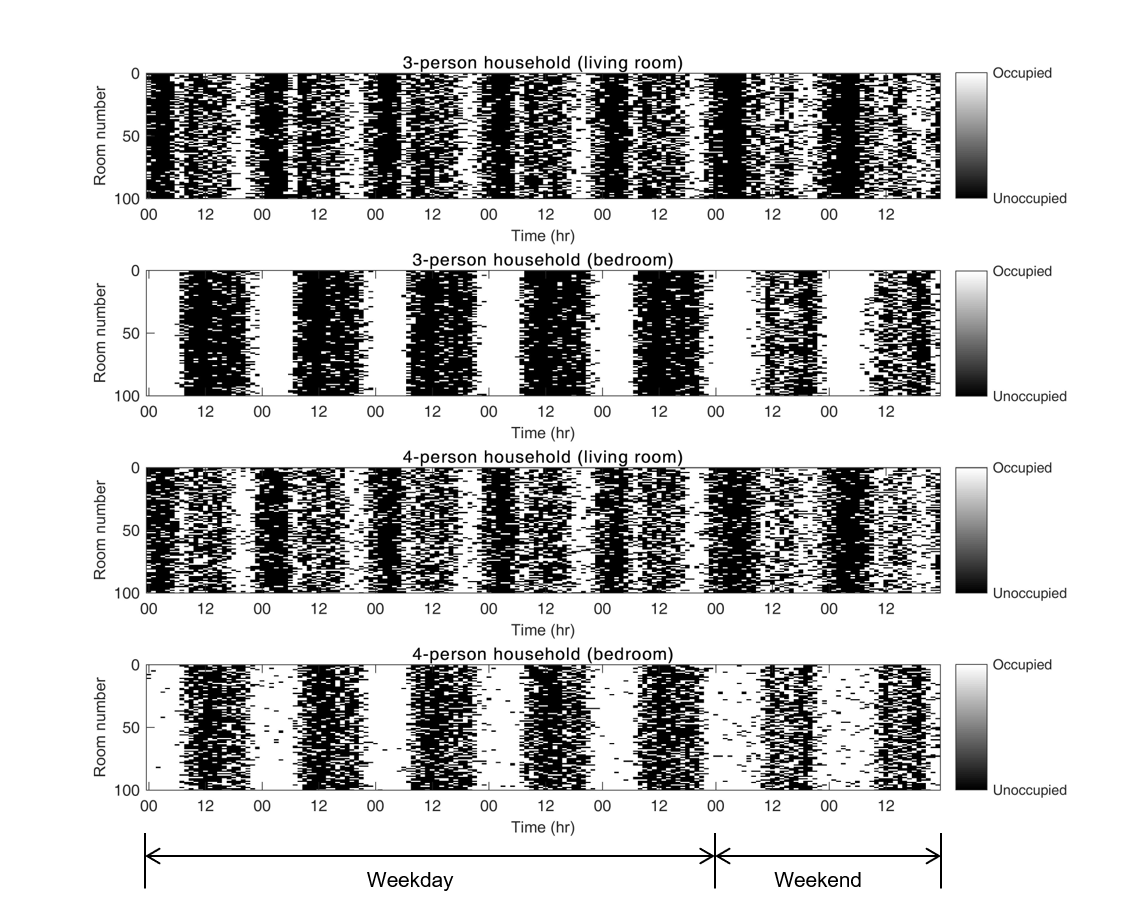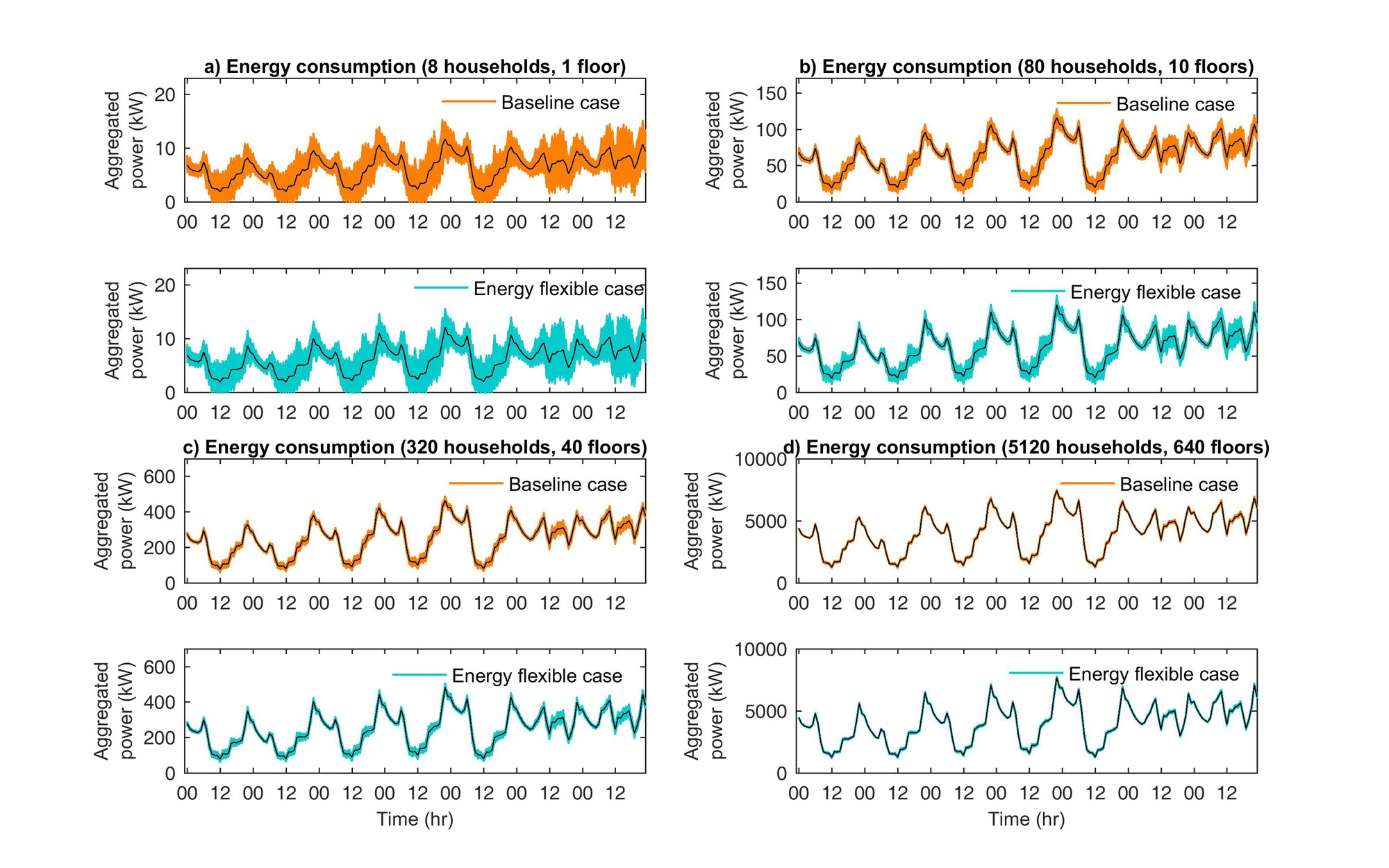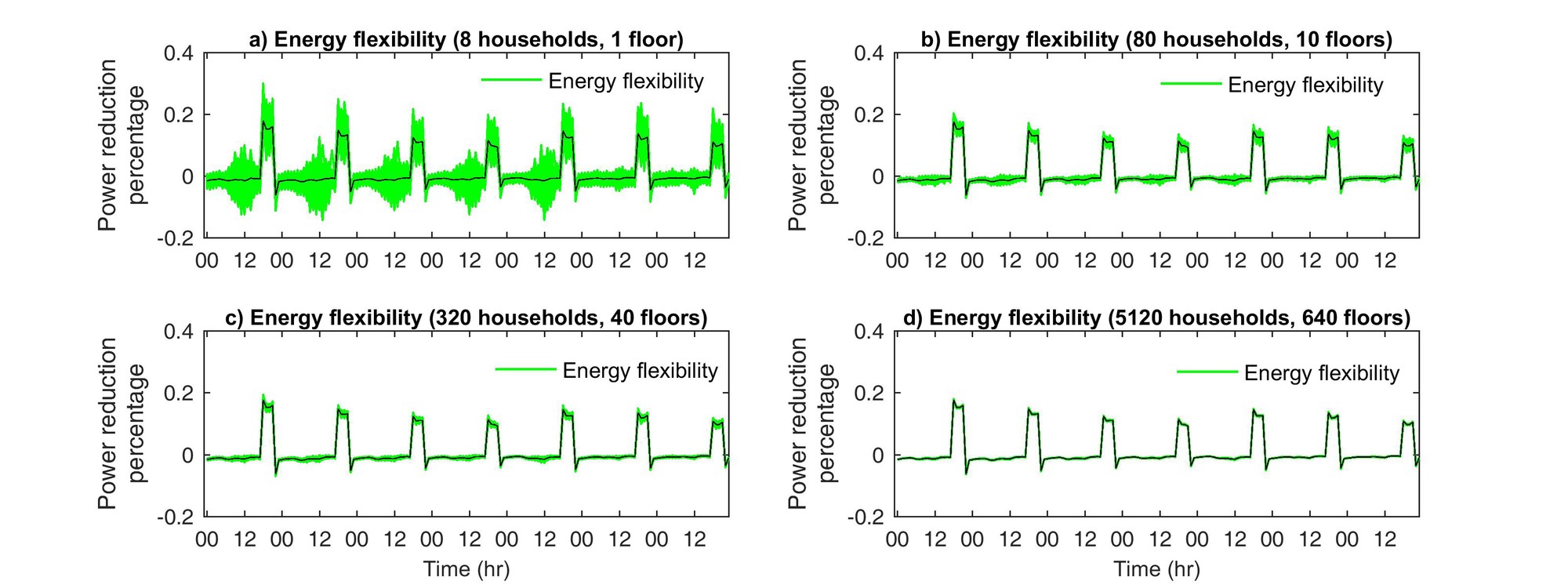Quantifying Uncertainty in Aggregate Energy Flexibility of Building Clusters
 by Maomao Hu
by Maomao Hu



About
Modern buildings are expected to be not only energy efficient but also energy flexible to facilitate reliable integration of intermittent renewable energy sources into smart grids. Estimating the aggregate energy-flexibility potential at a cluster level plays a key role in assessing financial benefits and service area for energy-flexibility services at design stage and determining real-time pricings at operating stage. However, most existing studies focused on the energy flexibility of individual buildings rather than building clusters. In addition, due to the intrinsic uncertainty in building envelope parameters, performance of building energy systems, and occupancy and occupant behavior, it is necessary to quantify the uncertainty in aggregate energy flexibility.
In this study, we developed an approach to quantifying the uncertainty in the aggregate energy flexibility of residential building clusters using a data-driven stochastic occupancy model that can capture the stochasticity of occupancy patterns. A questionnaire survey was carried out to collect occupancy time-series data in Hong Kong for occupancy model identification. Aggregation analysis was conducted considering various building archetypes and occupancy patterns. The uncertainty in aggregate energy flexibility was then quantified based on the proposed performance indices using Monte Carlo technique.
With the scaling up of building clusters, the estimated energy-flexibility potential became steady and the weekly energy flexibility stayed around 12.40%. However, the weekly uncertainty of aggregated energy flexibility exponentially decreased from 19.12% for 8 households to 0.74% for 5,120 households, which means that the estimate of a building cluster’s energy flexibility is more reliable than that of a single building.
Related Publication